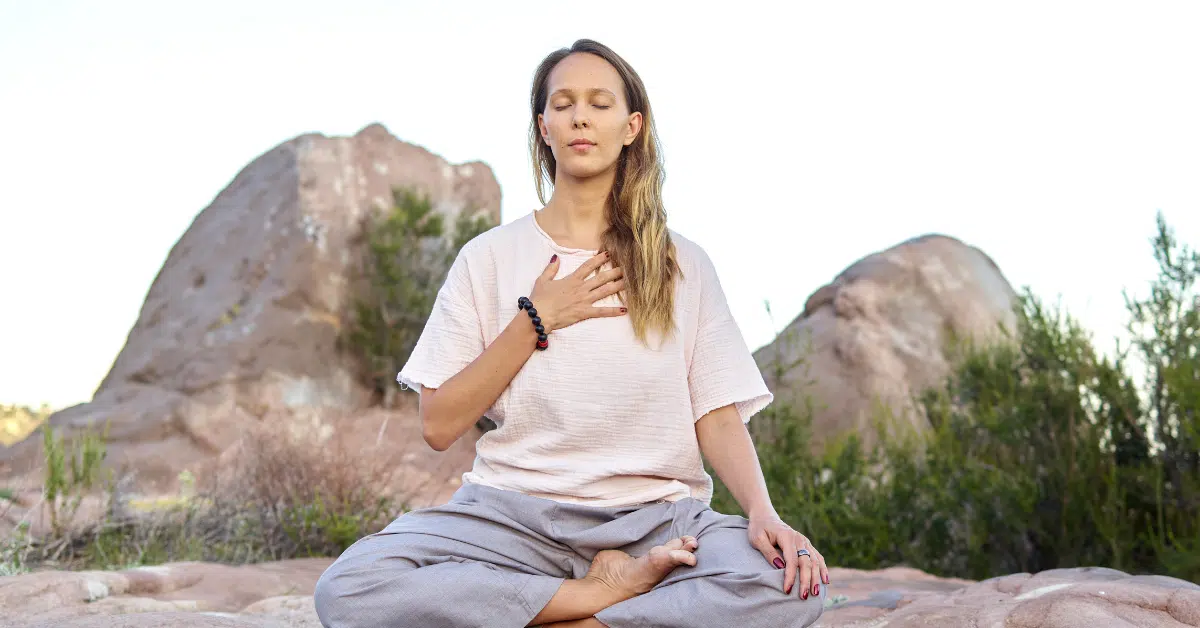Feeling anxious, nervous, or overwhelmed are all common and normal experiences that people face in their day to day lives. Sometimes however, these feelings can last longer than desired and cause us to feel uneasy, uncomfortable, or down right scared and make it hard to function in everyday activities, especially if you have an underlying mental health concern.
Picture this: It’s Monday morning, you slept past your alarm, the kids missed the bus, and now you’re running late for work. You were planning to prepare for an important meeting with the extra time you were planning to have once you got to the office, but now you show up minutes before you’re supposed to present to your team. You get through the meeting just fine, but now you have to address the growing pile of tasks in your email inbox. You sit down at your desk and your mind is spinning. You don’t know where to start and feel like you can hardly get your feet underneath you let alone focus on your computer screen. You’re thinking “I can’t wait for this day to be over”.
We all have had some sort of similar experience where we felt stressed, overwhelmed, or detached from our surroundings. Too often do we get caught up in the hustle and bustle of life that we find ourselves just going through the motions and doing what we can to stay afloat. The challenge that so many of us face in our busy lives is not having the opportunity to take a moment to center ourselves, slow down, and be in the moment. While this is no fault of our own and often driven by the fast-paced world we live in, below are a few tools you can use throughout your day that take less than a minute’s time to help reduce feelings of worry, panic, or stress, so that you can be more focused in the present moment.
5-4-3-2-1 Exercise
The 5-4-3-2-1 exercise, also known as the 5 senses exercise is a great way to help bring your attention to your physical surroundings to help ground yourself and get “out of your head” if you’re having racing thoughts associated with being overwhelmed or anxious. In this exercise you observe your surroundings and name to yourself 5 things you can see, 4 things you can feel, and so on below. The purpose of this exercise is not to get through the list as quickly as you can, but rather to take your time and observe with your senses the fine details of your surroundings (viewing the texture of a leaf, feeling the cool smoothness of an orange, etc.) to help slow your thoughts. (Therapist Aid, 2015).
- 5 things you can see
- 4 things you can feel
- 3 things you can hear
- 2 things you can smell
- 1 thing you can taste
Finger Breathing
Breathing exercises are great to use especially if you are feeling physical symptoms of anxiety like a racing heartbeat, rapid/shallow breathing, or that feeling like you have butterflies in your stomach. Breathing exercises, specifically when you breathe deep and bring awareness to your breathing, help to calm the fight or flight response, resulting in a slower heart rate, more controlled breathing, and feeling more relaxed. With finger breathing you hold one hand out in front of you, and with your other hand, take your pointer finger and trace up and down each finger on the other hand while taking slow and deep breaths. (Brewer, 2020).
For example:
- Slowly inhale while tracing upwards along the outside of your thumb, pause at the stop, and slowly exhale while tracing down the inside of your thumb.
- Then slowly inhale while tracing upwards along your pointer finger, pause at the top, and slowly exhale while tracing down the side of your pointer finger.
- And so on…
- Reverse the process once you’ve completed your last finger.
Progressive Muscle Relaxation
Progressive muscle relaxation (PMR) is great for reducing feelings of physical tension within your body and helps you to feel more grounded in your body. With PMR, find yourself in a comfortable sitting or standing position. Starting with your feet, squeeze and hold the muscles in your feet and toes for about 10 seconds and then relax them. Next, move up to your calves, flexing these muscles and holding them for about 10 seconds and then relax them. Then move upwards through your body, one body part/muscle group at a time until you reach your shoulders. This exercise is not meant to cause physical pain or discomfort, but rather, helps you to bring your attention and focus to each muscle group individually, followed by a feeling of tension release when relaxing the muscles. (Therapist Aid, 2017).
References
Brewer, J. (2020). Mind going a million miles a minute? Slow down with this breathing
exercise. ideas.ted.com. Retrieved from
https://ideas.ted.com/mind-going-a-million-miles-a-minute-slow-down-with-this-breathing-exercise/
Therapist Aid. (2015). Mindfulness exercises. Therapist Aid. Retrieved April 7, 2022, from
https://www.therapistaid.com/therapy-worksheet/mindfulness-exercises
Therapist Aid. (2017). Progressive muscle relaxation. Therapist Aid. Retrieved April 7, 2022,
from https://www.therapistaid.com/therapy-worksheet/progressive-muscle-relaxation-script


